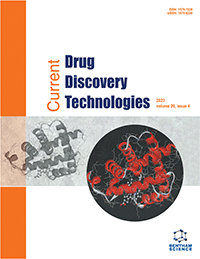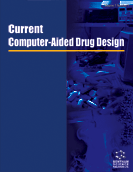Abstract
Human immunodeficiency virus (HIV)-1 Nef is a regulatory protein critically involved in AIDS pathogenesis. We previously demonstrated that extracellular Nef is efficiently internalized by human primary monocyte-derived macrophages (MDMs), thereby activating a number of transcription factors including STATs, MAPKs, IRF-3, and NF-κB. Such an activation state leads to the release of inflammatory factors whose paracrine effects deserve deep consideration. Here, we demonstrate that quiescent CD4 lymphocytes undergo cell activation when cultivated in supernatants from autologous MDMs treated with extracellular wt Nef but not with its counterpart mutated in the 72PxxP75 polyproline domain. Of a pathogenetic relevance, this effect coupled with the sensitization of quiescent CD4 lymphocytes to HIV-1 infection. By microarray assay, we found that the CCL24/eotaxin-2 gene was up-regulated in MDMs treated with wt Nef but not with the 72AxxA75 mutant. In addition, the higher transcription activity correlated with a significant increase of the CCL24/Eotaxin-2 release. Finally, we observed that anti-CCL24/eotaxin-2 antibodies efficiently neutralized the stimulatory effect on CD4 lymphocytes of supernatants from MDMs treated with extracellular Nef. Overall, these data support the idea that CCL24/eotaxin-2 is part of the mechanism of CD4 lymphocyte activation paracrinally induced by Nef.
Keywords: Macrophages, HIV-1, nef, microarray, CCL24/eotaxin-2
Current Drug Discovery Technologies
Title: Microarray Analysis Reveals CCL24/Eotaxin-2 as an Effector of the Pathogenetic Effects Induced by HIV-1 Nef
Volume: 4 Issue: 1
Author(s): Gianna Fiorucci, Eleonora Olivetta, Maria Vincenza Chiantore and Maurizio Federico
Affiliation:
Keywords: Macrophages, HIV-1, nef, microarray, CCL24/eotaxin-2
Abstract: Human immunodeficiency virus (HIV)-1 Nef is a regulatory protein critically involved in AIDS pathogenesis. We previously demonstrated that extracellular Nef is efficiently internalized by human primary monocyte-derived macrophages (MDMs), thereby activating a number of transcription factors including STATs, MAPKs, IRF-3, and NF-κB. Such an activation state leads to the release of inflammatory factors whose paracrine effects deserve deep consideration. Here, we demonstrate that quiescent CD4 lymphocytes undergo cell activation when cultivated in supernatants from autologous MDMs treated with extracellular wt Nef but not with its counterpart mutated in the 72PxxP75 polyproline domain. Of a pathogenetic relevance, this effect coupled with the sensitization of quiescent CD4 lymphocytes to HIV-1 infection. By microarray assay, we found that the CCL24/eotaxin-2 gene was up-regulated in MDMs treated with wt Nef but not with the 72AxxA75 mutant. In addition, the higher transcription activity correlated with a significant increase of the CCL24/Eotaxin-2 release. Finally, we observed that anti-CCL24/eotaxin-2 antibodies efficiently neutralized the stimulatory effect on CD4 lymphocytes of supernatants from MDMs treated with extracellular Nef. Overall, these data support the idea that CCL24/eotaxin-2 is part of the mechanism of CD4 lymphocyte activation paracrinally induced by Nef.
Export Options
About this article
Cite this article as:
Gianna Fiorucci , Eleonora Olivetta , Maria Vincenza Chiantore and Maurizio Federico , Microarray Analysis Reveals CCL24/Eotaxin-2 as an Effector of the Pathogenetic Effects Induced by HIV-1 Nef, Current Drug Discovery Technologies 2007; 4 (1) . https://dx.doi.org/10.2174/157016307781115502
| DOI https://dx.doi.org/10.2174/157016307781115502 |
Print ISSN 1570-1638 |
| Publisher Name Bentham Science Publisher |
Online ISSN 1875-6220 |
 23
23
- Author Guidelines
- Bentham Author Support Services (BASS)
- Graphical Abstracts
- Fabricating and Stating False Information
- Research Misconduct
- Post Publication Discussions and Corrections
- Publishing Ethics and Rectitude
- Increase Visibility of Your Article
- Archiving Policies
- Peer Review Workflow
- Order Your Article Before Print
- Promote Your Article
- Manuscript Transfer Facility
- Editorial Policies
- Allegations from Whistleblowers
- Announcements
Related Articles
-
Inflammatory Process in Alzheimer’s and Parkinson's Diseases: Central Role of Cytokines
Current Pharmaceutical Design Natural Products Inhibiting the Ubiquitin-Proteasome Proteolytic Pathway, A Target for Drug Development
Current Medicinal Chemistry Antimicrobial Peptides in Oral Cancer
Current Pharmaceutical Design Conformational Analysis using 2D NMR Spectroscopy Coupled with Computational Analysis as an Aid in the Alignment Procedure of 3DQSAR Studies
Drug Design Reviews - Online (Discontinued) Functional Improvement of Chimeric Antigen Receptor Through Intrinsic Interleukin-15Rα Signaling
Current Gene Therapy Current Trends and Future Strategies for the Global Impact of COVID-19 Pandemic
Coronaviruses Recent Patents on Thiazole Derivatives Endowed with Antitumor Activity
Recent Patents on Anti-Cancer Drug Discovery The Effects of Prostaglandin E-1 in Patients with Intermittent Claudication
Cardiovascular & Hematological Disorders-Drug Targets Histone Deacetylase (HDAC) Inhibitors - emerging roles in neuronal memory, learning, synaptic plasticity and neural regeneration
Current Neuropharmacology Skeletal Involvement in Antiphospholipid Syndrome
Current Rheumatology Reviews EGFR-Targeting Monoclonal Antibodies in Head and Neck Cancer
Current Cancer Drug Targets Molecular Signature of Human amniotic Fluid Stem Cells During Fetal Development
Current Stem Cell Research & Therapy Smoking and Endothelial Progenitor Cells: A Revision of Literature
Current Pharmaceutical Design Circadian Variation of Cardiovascular Events and Morning Blood Pressure Surge
Vascular Disease Prevention (Discontinued) HER-2 / neu and Topoisomerase IIα - Simultaneous Drug Targets in Cancer
Combinatorial Chemistry & High Throughput Screening Soluble Neuregulin-1 from Microglia Enhances Amyloid Beta-induced Neuronal Death
CNS & Neurological Disorders - Drug Targets Proteasome Function in Antigen Presentation: Immunoproteasome Complexes, Peptide Production, and Interactions with Viral Proteins
Current Protein & Peptide Science Stress and the α7 Nicotinic Acetylcholine Receptor
Current Drug Targets Nuclear Factor Erythroid 2 - Related Factor 2 Signaling in Parkinson Disease: A Promising Multi Therapeutic Target Against Oxidative Stress, Neuroinflammation and Cell Death
CNS & Neurological Disorders - Drug Targets Current Therapeutics, Their Problems and Thiol Metabolism as Potential Drug Targets in Leishmaniasis
Current Drug Metabolism


























